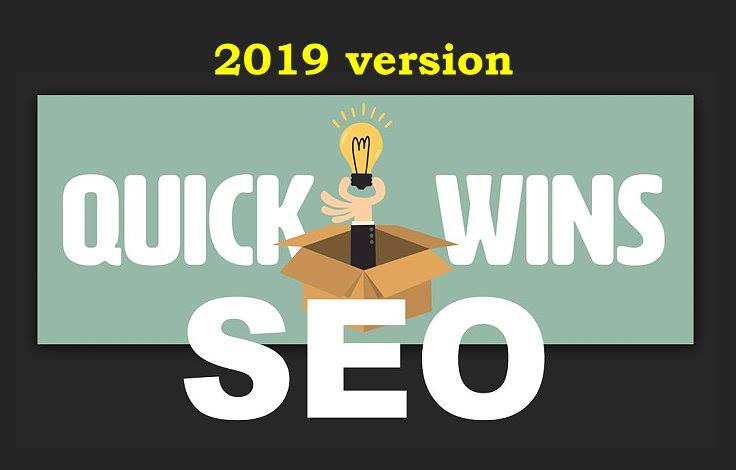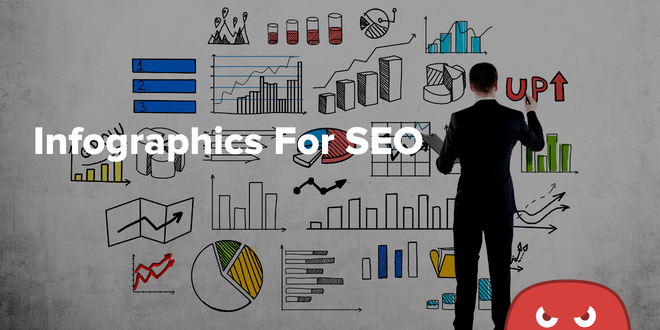Unlock the secrets to skyrocketing your website rankings with these 10 quick and effective SEO strategies you need to know.

Image courtesy of via DALL-E 3
Table of Contents
Introduction: What is SEO and Why It Matters
Have you ever wondered how some websites appear at the top of your search results when you look for something online? That’s where SEO comes in! SEO stands for Search Engine Optimization. It’s like a magic spell that helps websites show up higher in search results when people look for something on search engines like Google or Bing.
Understanding Search Engines
Search engines are like super-smart detectives that scan through the entire internet to find the most relevant websites for your search queries. They use special algorithms to analyze websites and decide which ones are the best match for what you’re looking for. The goal of SEO is to make sure your website is the one they find and recommend to searchers.
Why Rankings Matter
Having a high rank in search results is super important because it means more people can find your website easily. Think of it like this – if you had a lemonade stand, you’d want it to be on the busiest street in town, right? That way, more people would see it and come to buy your delicious lemonade. The same goes for websites – the higher they rank, the more visible they are, and the more visitors they get.
Optimize Your Title Tags
When it comes to improving your website’s visibility and ranking on search engines, optimizing your title tags is a crucial step. Title tags play a significant role in helping search engines understand what your page is about and can greatly impact your click-through rates. Let’s dive into how you can optimize your title tags for better SEO results.
What are Title Tags?
Title tags are HTML elements that define the title of a web page. They appear as the clickable headline in search engine results and are vital for both SEO and user experience. Think of them as a sneak peek into the content of your page, enticing users to click through to your website.
Best Practices for Title Tags
Now that you understand the importance of title tags, here are some best practices to optimize them for SEO:
- Include Relevant Keywords: Incorporate relevant keywords that reflect the content of your page. This helps search engines categorize your content and boosts your chances of appearing in relevant searches.
- Keep it Concise: Title tags should ideally be between 50-60 characters to ensure they display properly in search results. This length allows users to grasp the essence of your page quickly.
- Avoid Keyword Stuffing: While it’s important to include keywords, avoid overloading your title tag with too many keywords. Aim for a natural and compelling title that accurately represents your content.
- Create Unique Titles: Each page on your website should have a unique title tag that accurately reflects its content. This helps avoid confusion and ensures search engines can distinguish between your pages.
- Use Your Brand Name: If applicable, include your brand name in the title tag to build brand recognition and trust with your audience.
By following these best practices, you can craft enticing title tags that improve your SEO performance and attract more clicks from users searching for relevant content.
Use Headings Wisely
Headings are like signposts that guide both readers and search engines through your content. They help organize information, make it easier to understand, and improve your SEO ranking. Let’s dive into how you can use headings effectively to boost your website’s visibility.

Image courtesy of via Google Images
What are Headings?
Headings are different sizes of text that break up your content into sections. They range from H1 to H6, with H1 being the most important and typically used for the main title of your page. Each subsequent heading should be used to divide your content into subtopics to create a hierarchy.
How Headings Help SEO
Search engines use headings to understand the structure and topic of your content. When you use headings properly, you’re not only making it easier for visitors to navigate your site, but you’re also helping search engines index and rank your pages. By including relevant keywords in your headings, you signal to search engines what your content is about, which can improve your chances of appearing in search results.
Create Quality Content
When you visit a website, what keeps you engaged and interested? Quality content! Good content is like a magnet that attracts visitors and keeps them coming back for more. Imagine reading a story that is boring and doesn’t make sense – you would quickly lose interest, right? Well, the same goes for websites!
Tips for Creating Good Content
If you want your website to rank higher in search results, you need to create content that is not only interesting but also relevant to what people are searching for. Here are some tips to help you create quality content:
1. Use relevant keywords: Think about what words people might use to search for your website and make sure to include those keywords in your content.
2. Keep it clear and concise: Don’t overwhelm your readers with long, complicated sentences. Keep your content easy to read and understand.
3. Be useful: Provide information that is valuable to your readers. Answer their questions, solve their problems, and give them a reason to stay on your site.
By creating quality content that is engaging, informative, and keyword-rich, you can not only attract more visitors to your website but also improve your SEO rankings. Remember, content is king!
Quick Win #4: Use Internal Links
Internal links are links on your website that direct users to other pages within the same site. These links help users navigate your content easily and can also benefit your SEO efforts.

Image courtesy of via Google Images
How to Use Internal Links Effectively
When creating internal links, make sure to use relevant anchor text that describes the page you are linking to. This helps search engines understand the relationship between your different pages. Additionally, consider adding internal links to your high-traffic pages to encourage users to explore more of your website.
Quick Win: Optimize Images
When you visit a website, have you ever noticed that some images take a long time to load? This can be frustrating, right? Well, that’s where image optimization comes in. Optimizing images means making them the right size and format so they load quickly and don’t slow down your website. When your images load fast, it improves the overall user experience and can boost your website’s SEO.
How to Optimize Your Images
Now, you might be wondering how you can optimize your images to help your website rank higher in search results. Here are some simple tips to get you started:
1. Resize your images to the correct dimensions for your website. Large images can slow down loading times, so make sure they’re not too big.
2. Use descriptive file names for your images. Instead of leaving them as “IMG_1234.jpg,” try naming them with relevant keywords, like “best-chocolate-cake.jpg.” This can help search engines understand what the image is about.
3. Don’t forget to add alt text to your images. Alt text is a brief description of the image that appears if the image fails to load. This is not only helpful for users with visual impairments but also for search engines to understand the content of the image.
Quick Win #6: Improve Site Speed
Have you ever clicked on a website and waited for what feels like forever for it to load? It can be frustrating, right? Well, that’s why site speed is crucial for both users and search engines. When a website takes too long to load, visitors might leave before even seeing your awesome content. Search engines like Google also take into account how fast your site loads when ranking it in search results. So, having a speedy website is a win-win for everyone!

Image courtesy of via Google Images
Tips to Boost Your Site Speed
If you want to speed up your website, there are a few tricks you can try. First, make sure your images are not too large. Big images can slow down your site, so it’s a good idea to compress them before uploading. Another tip is to use caching, which stores parts of your website so it can load faster for repeat visitors. And don’t forget about minimizing the number of plugins you use on your site, as they can also affect its speed.
Secure Your Website with HTTPS
HTTPS stands for Hypertext Transfer Protocol Secure. It is a secure version of HTTP, which is the protocol used to send data between your browser and the website you are connected to. The key difference is that HTTPS uses encryption to secure the data being transmitted, making it harder for hackers to intercept and steal information.
Why HTTPS is Important for SEO
Having a secure website with HTTPS is not only crucial for protecting your visitors’ data and building trust, but it also plays a significant role in your search engine rankings. Search engines like Google prioritize websites that are secure and use HTTPS to ensure a safe browsing experience for users. By implementing HTTPS on your site, you signal to search engines that you prioritize security, which can positively impact your SEO efforts.
Quick Win: Utilize Meta Descriptions
Meta descriptions are short snippets of text that appear below the title of a webpage in search engine results. They provide a brief summary of the content on the page, helping users understand what to expect before clicking through.

Image courtesy of via Google Images
How to Write Good Meta Descriptions
When crafting meta descriptions, it’s essential to keep them concise and engaging. Here are some tips to help you write effective meta descriptions:
1. Keep it under 160 characters: Search engines typically display up to 160 characters of a meta description. Make sure your description is clear and to the point within this limit.
2. Include relevant keywords: Use keywords that are relevant to the content on the page to improve visibility and attract the right audience.
3. Be descriptive and compelling: Make your meta description compelling to entice users to click through to your website. Highlight the value or unique selling points of your content.
4. Match the content: Ensure that your meta description accurately reflects the content on the page. Misleading descriptions can lead to high bounce rates.
By optimizing your meta descriptions, you can improve your click-through rates and ultimately boost your SEO rankings.
Summary
In this blog post, we discussed some quick wins that can help improve your website’s SEO rankings fast. By implementing these strategies, you can increase visibility and attract more visitors to your site. Let’s recap the key points we covered:
- Optimize Your Title Tags: Writing effective title tags with relevant keywords can attract clicks and boost rankings.
- Use Headings Wisely: Organizing your content with headings can help search engines understand your website better.
- Create Quality Content: Writing engaging and keyword-rich content can keep visitors on your site longer.
- Use Internal Links: Linking to other pages on your website can enhance the user experience and improve SEO.
- Optimize Images: Properly sized images with descriptive alt text can speed up your website and enhance SEO.
- Improve Site Speed: A faster-loading website not only improves user experience but also boosts search engine rankings.
- Secure Your Website with HTTPS: Implementing HTTPS can provide security benefits and improve SEO.
- Utilize Meta Descriptions: Well-crafted meta descriptions can impact click-through rates and SEO performance.
By following these quick wins, you can make significant improvements to your website’s SEO and increase your chances of ranking higher in search results. Remember, SEO is an ongoing process, so continue to monitor and optimize your strategies for long-term success.
Will these tips guarantee a top ranking?
While these tips can definitely help boost your rankings on search engines, there are no guarantees when it comes to SEO. Search engine algorithms can be complex and ever-changing, so it’s important to stay consistent with your efforts and continuously monitor your progress. Keep implementing best practices and creating high-quality content to improve your chances of achieving a higher ranking.
How soon will I see improvements?
The timeline for seeing improvements in your SEO rankings can vary depending on various factors such as the competitiveness of your industry, the quality of your content, and the effectiveness of your optimization efforts. Some changes may yield results quickly, while others may take more time to show noticeable improvements. It’s important to be patient and continue working on your SEO strategy for long-term success.







